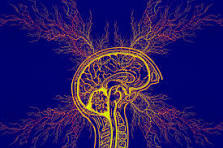Introduction:
ADHD is often associated with difficulties in controlling impulses, regulating emotions, and paying attention. These difficulties can manifest themselves in unhealthy coping strategies, such as emotional eating, for some people with ADHD. This article examines the relationship between ADHD and emotional eating, and sheds light on how relaxation and treatment techniques can be pivotal in breaking the cycle.
Understanding Emotional eating:
Emotional eating is the act of eating food in response to an emotional state, rather than hunger. People with ADHD are more likely to experience emotional eating because of the emotional dysregulation associated with the disorder. Emotional eating may lead to an unhealthy cycle of guilt, overeating and stress. This can make ADHD sufferers even more challenged.
ADHD & Emotional Dysregulation :
Impulsivity in Food Choices: People with ADHD and impulsive tendencies may have difficulty making healthy food choices. Certain foods provide instant relief for those who are experiencing emotional distress.
Executive Function Issues: Executive functions deficits are associated with ADHD and can affect planning, decision-making and organization. This includes food choices. This can lead to irregular eating habits, dependence on convenience foods and difficulties adhering a balanced diet.
Emotional Triggers and Stress: ADHD stressors such as academic or occupational difficulties can trigger emotional eating. Stress-induced emotional eating is a temporary way to escape overwhelming emotions, but it can lead to unhealthy coping mechanisms.
Breaking the cycle through treatment:
Behavior Therapy: The cornerstone of ADHD treatment can be adapted for emotional eating. The therapeutic interventions are aimed at identifying triggers, promoting mindful eating, and developing coping skills. This approach empowers people to make better food choices and control their emotional responses.
Cognitive-Behavioral Treatment (CBT) When applied to emotional eating within the context of ADHD it helps people recognize and change negative thoughts related to food. CBT helps develop healthier eating habits and attitudes by addressing distorted views of food and emotions.
Medication management: In some ADHD patients, medication management is crucial to reducing impulsive behavior and improving emotional regulation. The medications that treat ADHD symptoms can indirectly reduce emotional eating.
Relaxation Techniques:
Mindful Eat Practices: The practice of mindful eating is to pay attention to all the senses when eating. This includes taste, texture and smell. By incorporating mindfulness techniques into meal preparation, individuals with ADHD can become more aware of the emotional triggers that influence their eating.
Stress Reducing Activities: By engaging in stress-reducing exercises such as meditation, yoga or deep breathing, you can reduce the emotional burden which contributes to emotional eating. These relaxation techniques offer alternative ways to cope with stress and emotions.
Regular Exercise: Regular exercise not only promotes overall health, but it can also help manage ADHD symptoms and reduce stress. Regular exercise regulates mood, improves sleep and allows for emotional expression. It reduces the need to rely on food as a way of coping with stress.
Healthy Coping Strategies:
Emotional awareness: Treatment of emotional eating starts with emotional awareness. People with ADHD will benefit from recognizing their emotional triggers, and understanding the relationship between emotions and eating behavior.
Building Coping mechanisms: Treatment includes building alternative coping mechanism for managing emotions. Journaling, talking with a therapist or engaging in creative activity as outlets for emotion expression can help reduce the dependency on food to provide emotional comfort.
Nutritional counseling: Getting guidance from a dietitian or nutritionist can give individuals with ADHD the tools they need to maintain a healthy diet. Nutritional counseling helps people make informed food decisions by addressing their specific nutritional needs.
Create a supportive environment:
Family Support and Social Support: Creating a supportive environment can be crucial to breaking the cycle. Families and friends can play an important role in reinforcing healthy eating habits, encouraging emotional well-being and reinforcing positive behavior.
Education & Advocacy Educating friends, family, and educators on ADHD and emotional eating and the possible links can create a more supportive and understanding environment. Advocating for ADHD awareness can reduce stigma and encourage open discussions about challenges that individuals may be facing.
Conclusion:
In order to break the cycle of emotional eating in the context ADHD, a multidimensional and comprehensive approach is required. Treatment strategies such as cognitive-behavioral treatment, behavioral therapy and medication management address the underlying ADHD syndromes and promote healthier coping mechanisms. Treatment effectiveness is further enhanced by incorporating relaxation techniques, healthy coping skills, and a supportive environment. When people with ADHD are able to control their emotions and develop healthier relationships with food they can break the cycle of emotional eating. This leads to an improved approach to nutrition and overall wellbeing. Research and awareness are essential in improving treatment methods and promoting holistic wellbeing for individuals with ADHD.



